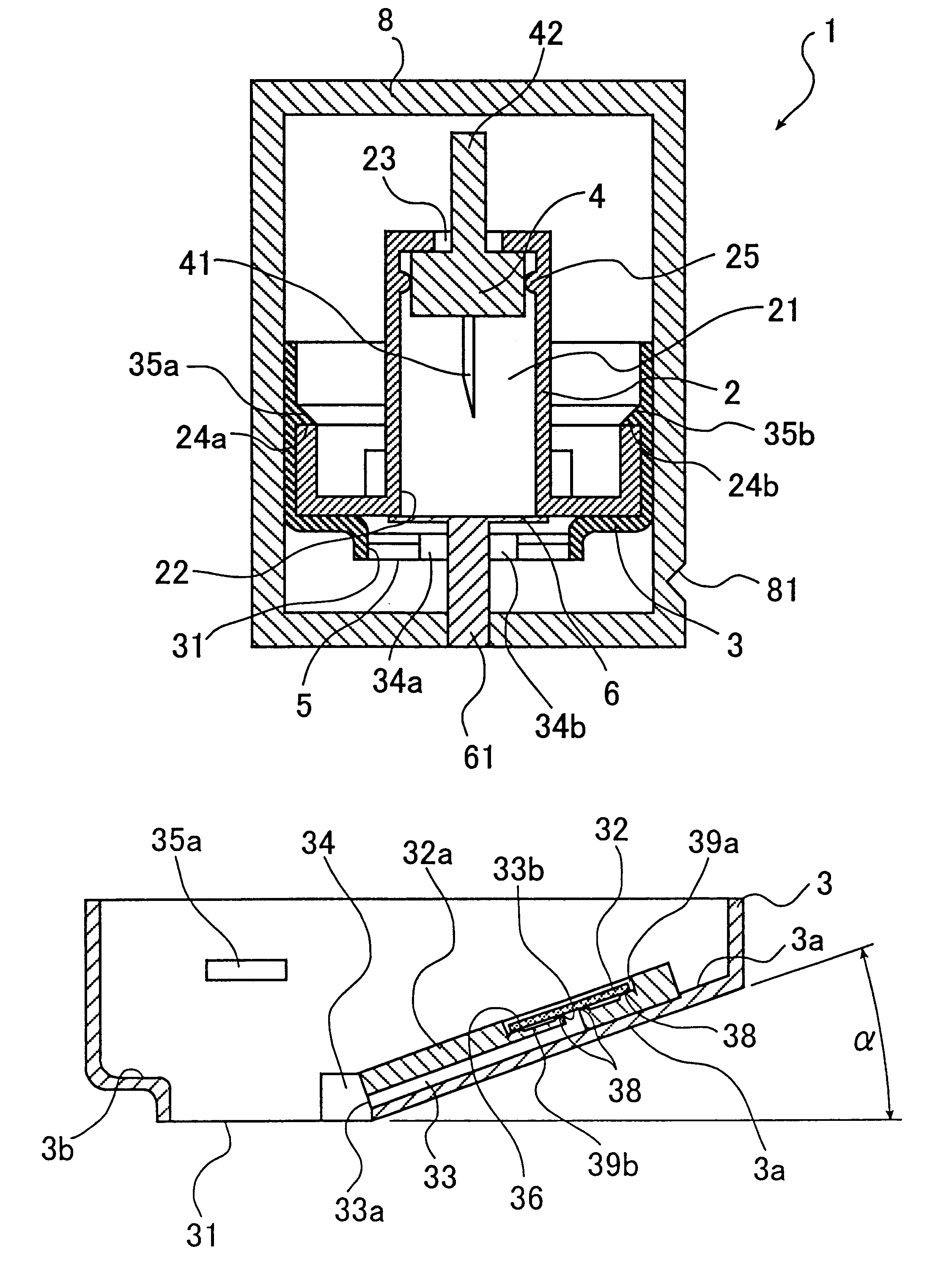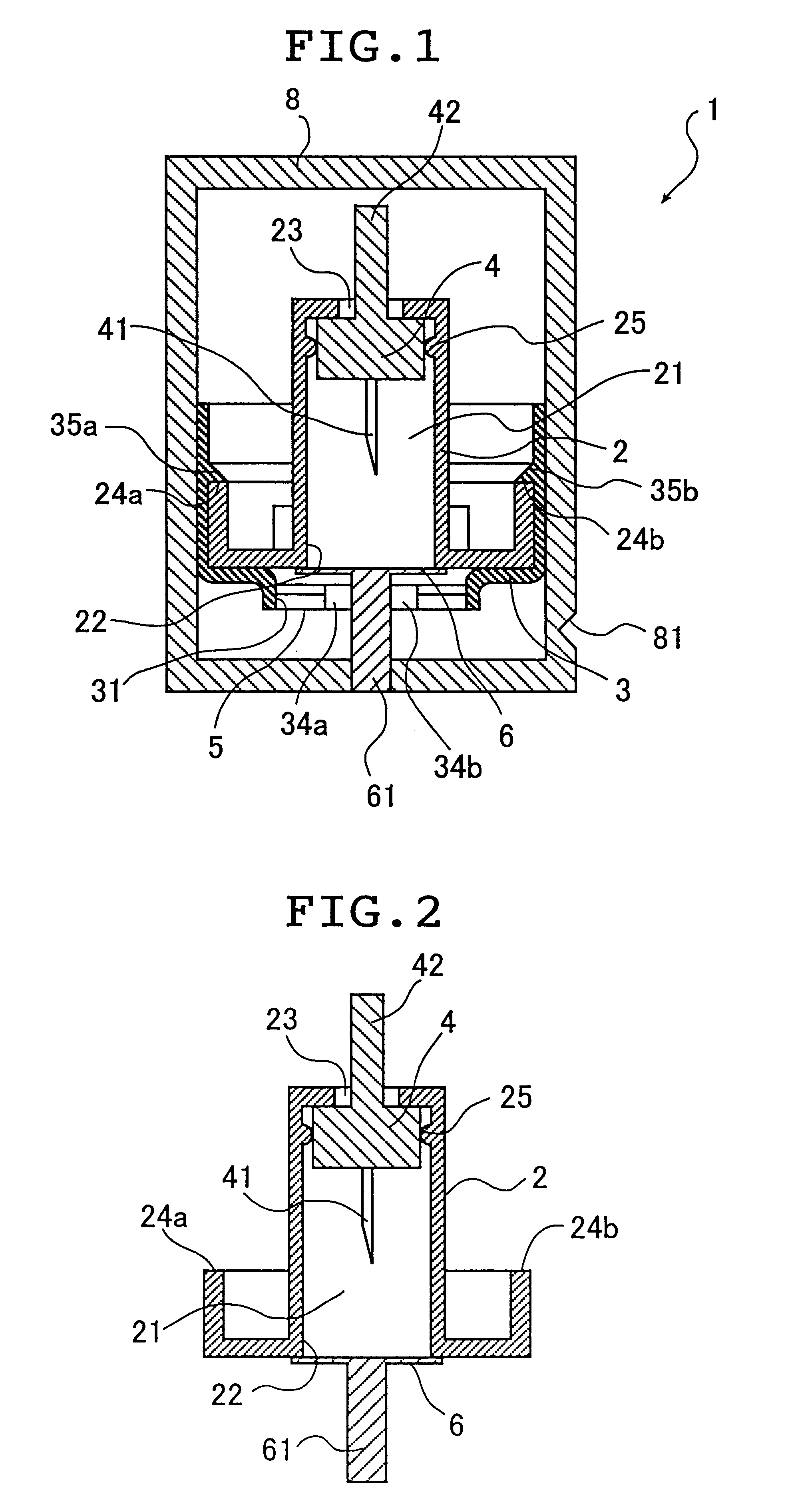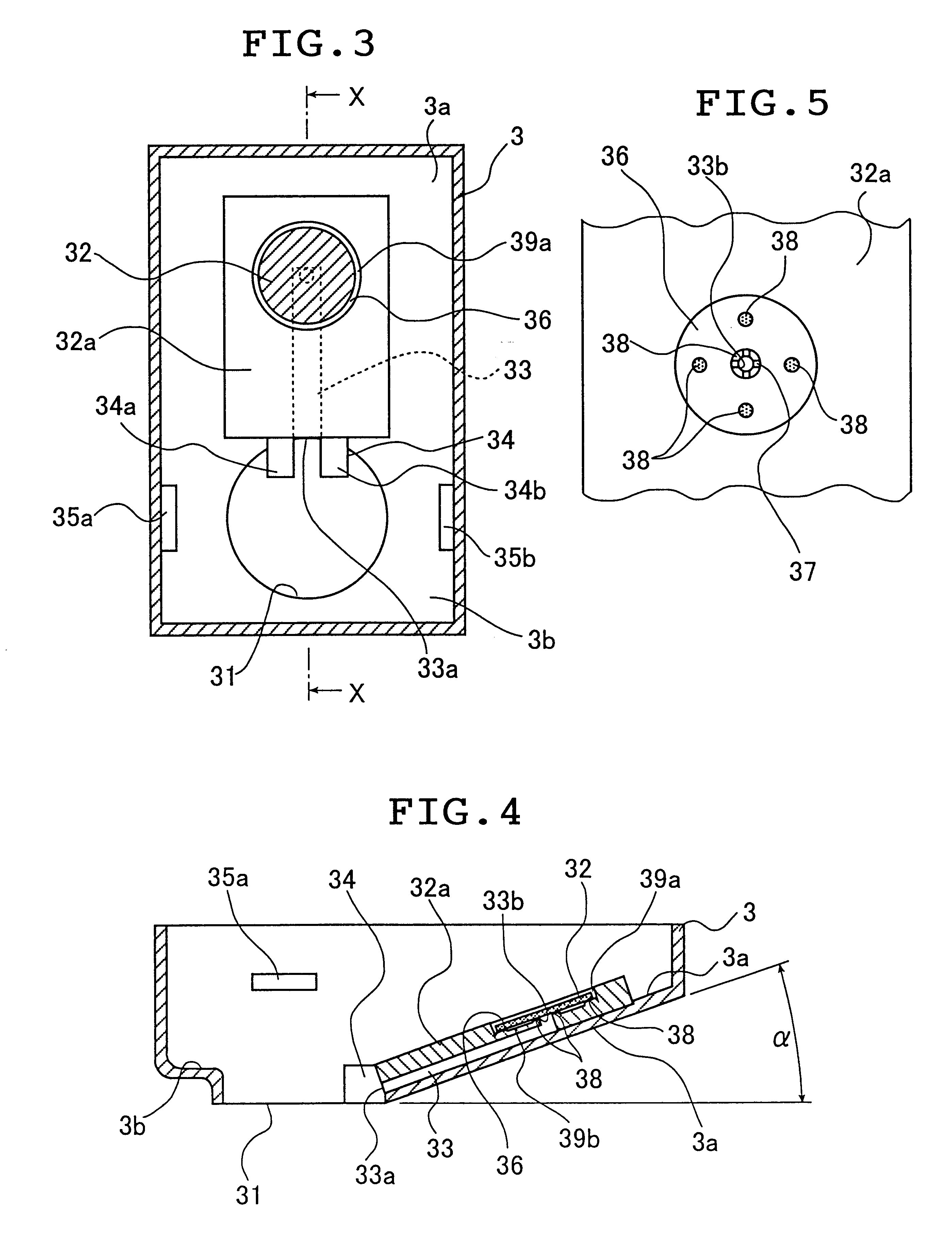Assembly having lancet and means for collecting and detecting body fluid
a technology of body fluid and lancet, which is applied in the field of assembly having lancet and means for collecting and detecting body fluid, can solve the problems of cumbersome operation, risk of infection by the blood that adheres to the tourniquet, and the difficulty of sterilization of the puncture needle, so as to achieve efficient introduction
- Summary
- Abstract
- Description
- Claims
- Application Information
AI Technical Summary
Benefits of technology
Problems solved by technology
Method used
Image
Examples
first embodiment
FIG. 1 is a lateral cross sectional view of an assembly 1 according to the present invention.
The assembly 1 comprises a first housing 2 accommodating the lancet 4 and a housing 3 accommodating the body fluid-collecting and detecting means.
FIG. 2 is a cross sectional view of the lancet section of FIG. 1. The first housing 2 has a sleeve 21 in which the lancet 4 is movably accommodated. The sleeve 21 has a first opening 22 at its distal end and a proximal opening 23 at its proximal end.
FIG. 3 is a plan view of the body fluid-collecting and detecting section, and this section comprises detection means 32 and the housing 3 having a second opening 31 formed therewith to allow introduction of the body fluid to the detection means 32.
FIG. 4 is a cross sectional view taken along lines X--X of the second housing 3 in FIG. 3.
The first housing 2 and the second housing 3 are fixedly secured to each other to constitute the assembly 1 such that the first opening 22 and the second opening 31 surro...
second embodiment
It should be noted that, in the embodiment as described above, the test strip housing 32a is formed on the bottom surface 3a. When the second housing 3 has a sleeve which fixedly receive the first housing 2 in its interior, the space required for the second housing 3 will be reduced. Such embodiment will be described later as the
The assembly 1 is preferably sealed in a protective shield 8 after its assembly, namely, after assembling to form the distal opening 5 the first housing 2 having the sealed sleeve 21 and the sterilized puncture needle 41 enclosed therein and the second housing 3 having the body fluid-detecting means. The structure of the protective shield 8 is not limited as long as the assembly 1 of particular embodiment can be sealed in its interior. The embodiment of the protective shield 8 shown in the drawings is the one in the form of a sheet, and the protective shield 8 of this embodiment can be removed immediately before the use by tearing the sheet from the notch 81...
PUM
 Login to View More
Login to View More Abstract
Description
Claims
Application Information
 Login to View More
Login to View More - R&D
- Intellectual Property
- Life Sciences
- Materials
- Tech Scout
- Unparalleled Data Quality
- Higher Quality Content
- 60% Fewer Hallucinations
Browse by: Latest US Patents, China's latest patents, Technical Efficacy Thesaurus, Application Domain, Technology Topic, Popular Technical Reports.
© 2025 PatSnap. All rights reserved.Legal|Privacy policy|Modern Slavery Act Transparency Statement|Sitemap|About US| Contact US: help@patsnap.com



